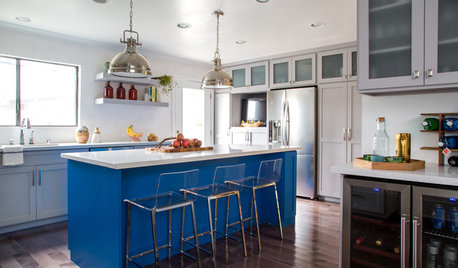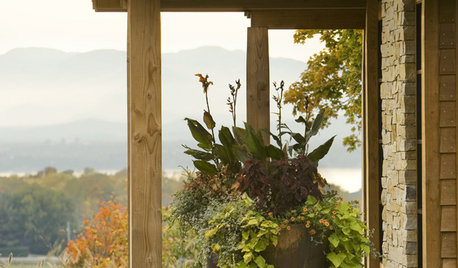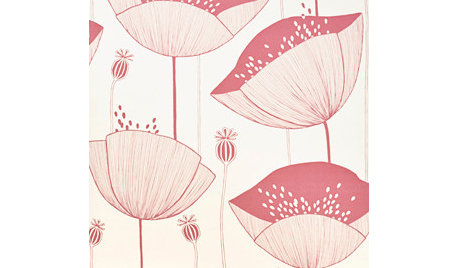I cant grow rhodys!!
hobbitmom
17 years ago
Related Stories

HOUSEPLANTS8 Houseplants You Can't Kill
They're forgiving and let you forget. Houseplants don't get any easier than this
Full Story
KITCHEN OF THE WEEKKitchen of the Week: We Can’t Stop Staring at This Bright Blue Island
A single mom updates her childhood kitchen, so she and her daughter have a functional and stylish space
Full Story
PETS5 Finishes Pets and Kids Can’t Destroy — and 5 to Avoid
Save your sanity and your decorating budget by choosing materials and surfaces that can stand up to abuse
Full Story
KITCHEN DESIGNTrend Alert: Swinging Doors Can't Miss for Convenience
Create accessibility and elegance in one fell swoop with a swinging door modernized for today's homes
Full Story
GARDENING GUIDESGrow a Beautiful Fall Garden in a Pot
Welcome autumn with 7 gorgeous plants that thrive in containers and enliven your porch or patio throughout the cooler season
Full Story
GARDENING GUIDESGrow Your Own Privacy: How to Screen With Plants and Trees
Use living walls to lower your home and garden's exposure while boosting natural beauty in your landscape
Full Story
WINTER GARDENINGExtend Your Growing Season With a Cold Frame in the Garden
If the sun's shining, it might be time to sow seeds under glass to transplant or harvest
Full Story
EDIBLE GARDENSHow to Grow Your Own Peaches and Nectarines
Make gardening a little sweeter with these juicy fruits, which you can eat after plucking or preserve for later
Full Story
GARDENING GUIDESGrow a Beautiful Garden in Alkaline Soil
Got alkaline soil? Learn how to manage it and the many beautiful plants that will thrive in this ‘sweet’ soil
Full Story
PRODUCT PICKSGuest Picks: Beautiful Wallpaper to Grow With a Child
These lighthearted papers will last from babyhood to beyond the teenage years — and they appeal to grown-up eyes too
Full StorySponsored






morz8 - Washington Coast
hobbitmomOriginal Author
Related Professionals
Rancho Palos Verdes Landscape Architects & Landscape Designers · Mount Wilson Landscape Architects & Landscape Designers · Goodyear Landscape Contractors · Manchester Landscape Contractors · Stoughton Landscape Contractors · Blue Springs Landscape Contractors · Cornelius Landscape Contractors · Hurricane Landscape Contractors · Kaysville Landscape Contractors · Lewisville Landscape Contractors · Louisville Landscape Contractors · Lyndhurst Landscape Contractors · New Providence Landscape Contractors · Ramsey Landscape Contractors · Severna Park Landscape Contractorsrhodyman
bogie
rhodyman
morz8 - Washington Coast
hobbitmomOriginal Author
rhodyman
lesdvs9
rhodyman
lesdvs9
rhodyman
lesdvs9
rhodyman
lesdvs9
atash
gardengal48 (PNW Z8/9)